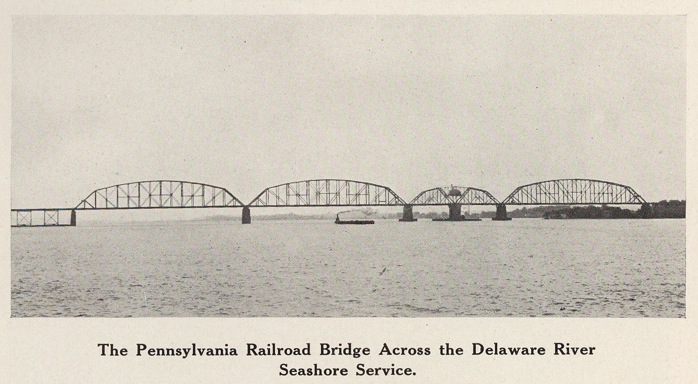
Delair Bridge, 1896
Pennsylvania Railroad (now Conrail) over the Delaware River
© Jack J. Steelman,
Workshop of the
World (Oliver Evans Press, 1990).
The Pennsylvania and the
Reading Railroads' first conquest of the lucrative New
Jersey Shore trade began with the introduction of ferry
service between Philadelphia and Camden. Patrons riding
the Pennsylvania received a short ferry ride, but the
train trip to the Shore was long; conversely, patrons
riding the Reading had a longer ferry ride, but the train
trip to the Shore was short.
It was the Pennsylvania Railroad, with its large
financial structure and imposing Broad Street Terminal,
which first crossed the Delaware by bridge. The site
chosen was in Bridesburg, far above the river traffic at
the pier in Center City and Camden. The line branched off
the main line of the Pennsylvania (the New
York-Philadelphia route) at Frankford Junction and
traveled as an elevated structure up to. the
river. 1
From there it
traveled over two fixed steel spans to a steam-powered,
gear-driven horizontal revolving span at a point greater
than halfway across the river. After crossing the
revolving span, the line travelled across another fixed
steel span and then entered New Jersey. It met up with
the Camden-Atlantic City Pennsylvania Railroad line at
Haddonfield.
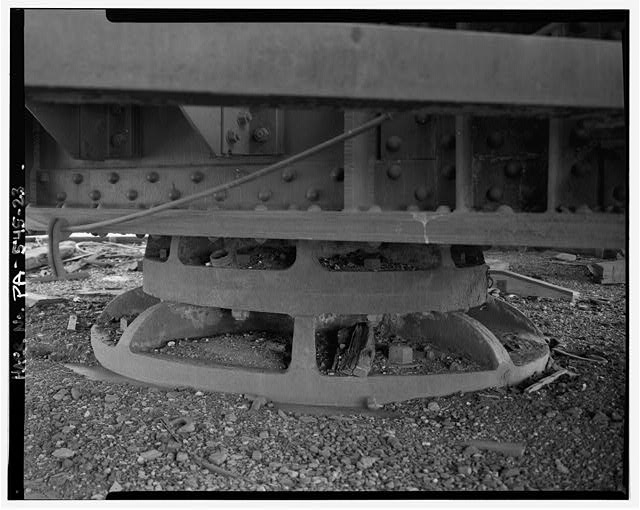
"Pivot bearing of
swing span" Joseph Elliott (1999). HAER
When U.S. Steel built its Fairless Hills plant near
Bristol, Pennsylvania, the U.S. Army Corps of Engineers
widened and deepened the Delaware River channel to permit
movement of heavy barges. They also relocated the channel
at the Delair Bridge, forcing the construction of a new,
lift-type draw span and the permanent securing of the
revolving span.
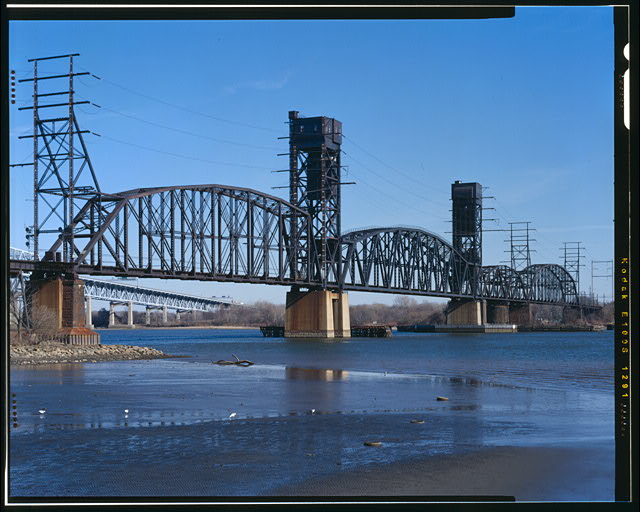
"Overview from
southeast" Joseph Elliott (1999). HAER
The technique of replacing a fixed span with a new
lift-type draw span was an ingenious combination of
bridge engineering, marine transport, and the weather. To
remove the fixed span, an elevated framework was
constructed on a barge that was moved to the Philadelphia
side of the river. The framework was constructed to be
similar in height to the fixed span of the bridge. At the
time of the month when the low tide was at its very
lowest, the barge was floated into place, directly
beneath pre-engineered points on the fixed span. As the
tide rose to its very highest, the pins anchoring the
span were released and the span rose off its abutments,
ready to be tugged upstream. 2
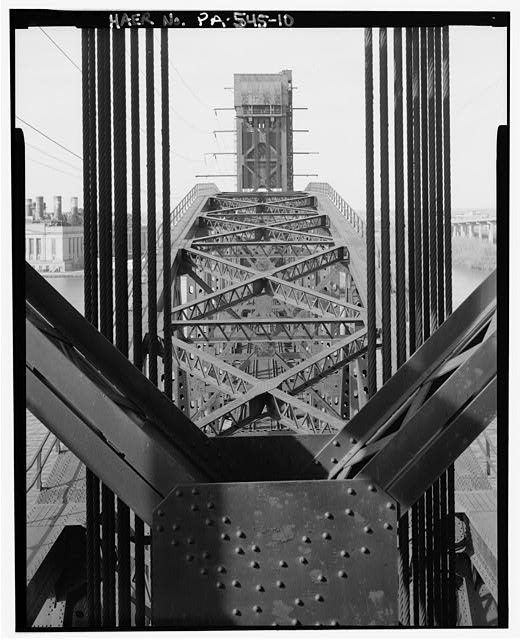
"Looking west
over top of vertical lift span" Joseph Elliott
(1999). HAER
Likewise, the new lift-type draw span was assembled on a
similar barge, positioned on the Philadelphia side
upstream of the bridge. It was floated into place during
the highest tide and allowed to settle as the tide ebbed.
Once the span was secured, high towers with
counterweights and sheaves were installed.
3
Presently, the
bridge is used by freight traffic and now, more recently,
by the "Gamblers Express" passenger service to Atlantic
City.
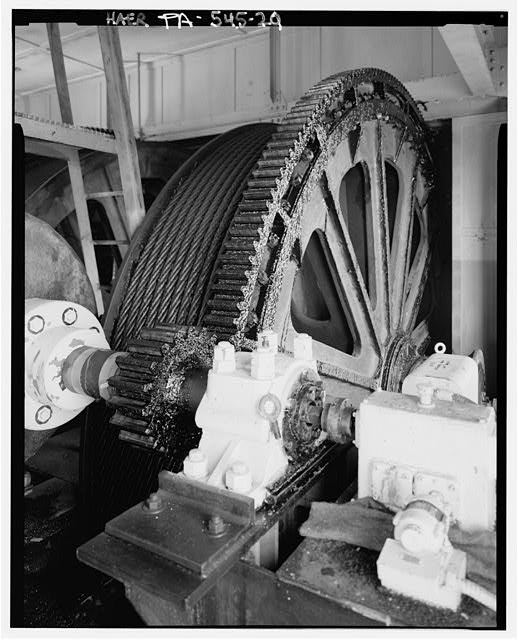
"Hoist mechanism
for vertical lift span" Joseph Elliott (1999).
HAER
1 Being elevated, the
line had bridges not only at existing streets but at
locations where bridges might be anticipated at future
dates.
2 This information drawn
from the personal recollection, notes, and photos taken
by the author.
3 Notes of the
Author.
Update May
2007 (by
Joel Spivak):
Still in place.